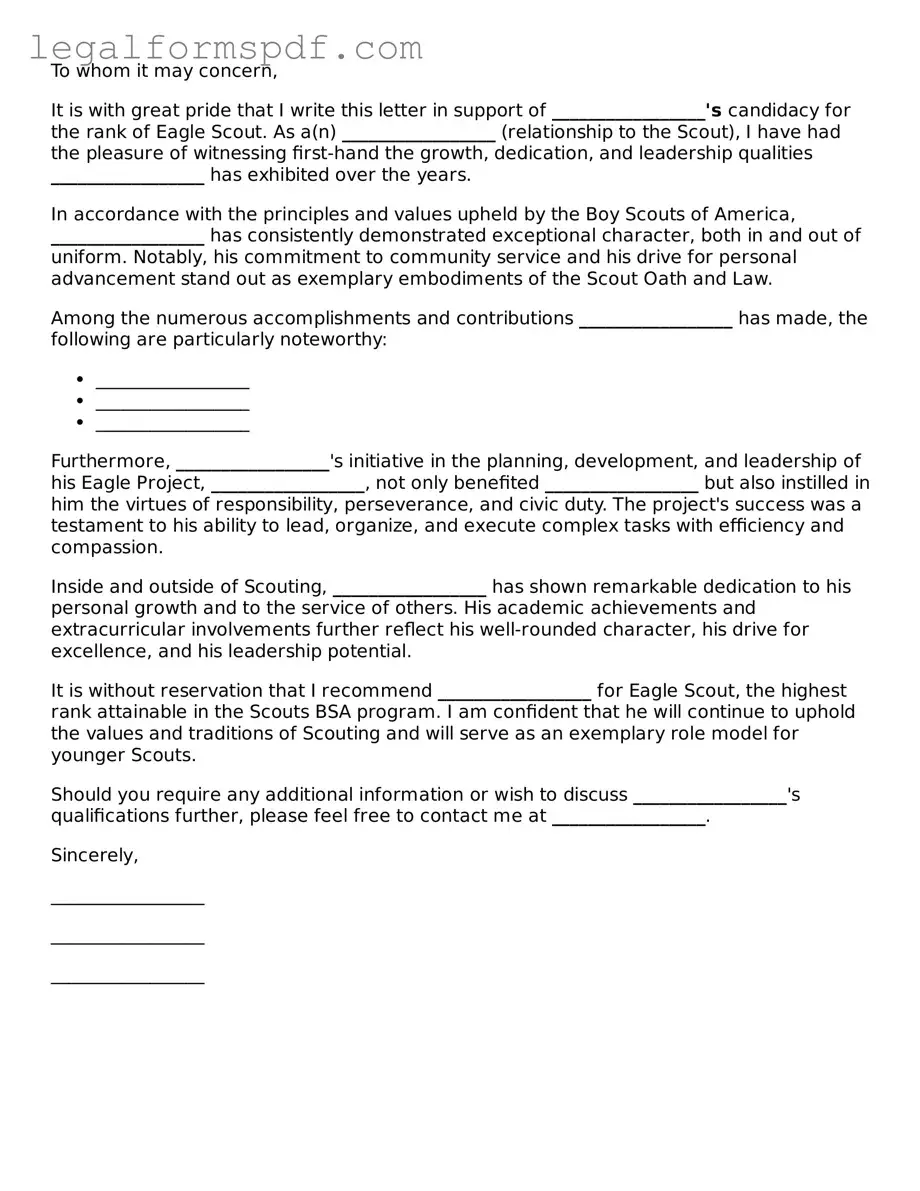To whom it may concern,
It is with great pride that I write this letter in support of _________________'s candidacy for the rank of Eagle Scout. As a(n) _________________ (relationship to the Scout), I have had the pleasure of witnessing first-hand the growth, dedication, and leadership qualities _________________ has exhibited over the years.
In accordance with the principles and values upheld by the Boy Scouts of America, _________________ has consistently demonstrated exceptional character, both in and out of uniform. Notably, his commitment to community service and his drive for personal advancement stand out as exemplary embodiments of the Scout Oath and Law.
Among the numerous accomplishments and contributions _________________ has made, the following are particularly noteworthy:
- _________________
- _________________
- _________________
Furthermore, _________________'s initiative in the planning, development, and leadership of his Eagle Project, _________________, not only benefited _________________ but also instilled in him the virtues of responsibility, perseverance, and civic duty. The project's success was a testament to his ability to lead, organize, and execute complex tasks with efficiency and compassion.
Inside and outside of Scouting, _________________ has shown remarkable dedication to his personal growth and to the service of others. His academic achievements and extracurricular involvements further reflect his well-rounded character, his drive for excellence, and his leadership potential.
It is without reservation that I recommend _________________ for Eagle Scout, the highest rank attainable in the Scouts BSA program. I am confident that he will continue to uphold the values and traditions of Scouting and will serve as an exemplary role model for younger Scouts.
Should you require any additional information or wish to discuss _________________'s qualifications further, please feel free to contact me at _________________.
Sincerely,
_________________
_________________
_________________
